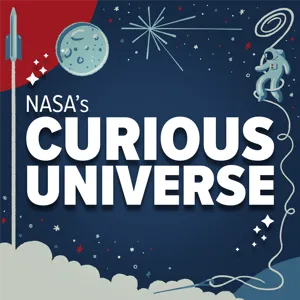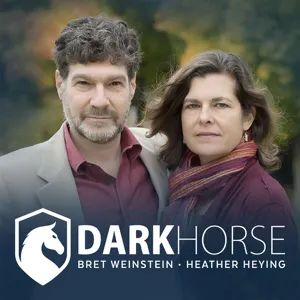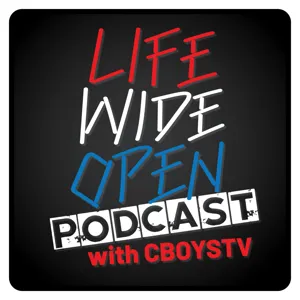Podcast Summary
Launching the James Webb Space Telescope: A Career Highlight for Rudy Albert: Rudy Albert, as the Ariane 5 program manager, prepares for the launch of the James Webb Space Telescope, a career highlight event marking a significant step forward in our understanding of the universe.
Both athletes and space professionals, like the European Space Agency's Rudy Albert, experience intense preparation and anticipation for their respective major events. For Rudy, the launch of the James Webb Space Telescope (Webb) is a career highlight. After years of planning and collaboration, the day has finally come to send Webb into space from the European Space Agency's launchpad in French Guiana. This international mission benefits from the location's proximity to the equator, which provides additional performance and fewer safety constraints. Rudy, as the Ariane 5 program manager, will ensure the team's focus during the launch. This unique event marks a significant step forward in our understanding of the universe, as scientists anticipate that Webb's research will fundamentally change our perception of the cosmos.
Journey of the James Webb Space Telescope to Space: The James Webb Space Telescope's journey to space involves complex assembly, transportation through the Panama Canal, and a powerful launch by the Ariane 5 rocket, with teams ensuring its safe travel.
The James Webb Space Telescope's journey to space is an intricate and complex process. After being assembled from parts manufactured in different countries, the telescope had to be transported to California for final assembly and testing. Due to its large size, it had to be folded and shipped through the Panama Canal to French Guiana. The launch will require the powerful Ariane 5 rocket, which is currently in French Guiana waiting for Webb's arrival. The launch process involves a coordinated effort from various teams and organizations, with Rudy's team at the European Space Agency responsible for ensuring Webb's safe journey to space. The Ariane 5 is a massive and powerful rocket, capable of carrying 50,000 pounds to space and standing tall at 20 stories high. The launch day will be a significant moment for scientists, engineers, and space enthusiasts around the world as they eagerly anticipate the telescope's contributions to our understanding of the universe.
Preparing for an Ariane 5 rocket launch: The Ariane 5 rocket launch involves weather checks, propellant loading, and meticulous final sequence preparation to ensure a safe and successful mission.
The Ariane 5 rocket is a crucial asset for bringing various missions, including scientific research, exploration, and satellite deployment, into space. A typical launch day begins with weather checks and preparing the rocket for propellant loading at the launcher control center. Once ready, the team moves to the second control center where final sequences are put in place for an automatic launch. The team meticulously checks and rechecks before launch to ensure readiness. Weather conditions, such as strong winds, can impact the launch and are closely monitored by the team to ensure the safety of the spacecraft.
Launching the James Webb Space Telescope: A Million Miles Away from Earth: The James Webb Space Telescope, set to launch on an Ariane 5 rocket, will offer unprecedented observations of the universe from a million miles away at the second Lagrange point, marking a major advancement in space exploration.
The James Webb Space Telescope, set to launch on an Ariane 5 rocket, will provide humanity with the sharpest eyes to study the universe. After a thrilling acceleration, the telescope will travel a million miles away from Earth to a stable orbit at the second Lagrange point, where it will be protected from Earth and sun light. Once in place, it will offer unprecedented observations with its large mirrors and powerful capabilities. The launch process involves the rocket and telescope separating, with the rocket safely drifting away and eventually being brought to a stable orbit as a graveyard. This historic moment marks a significant step forward in space exploration and our understanding of the cosmos.
From launch to commissioning: The James Webb Space Telescope's 6-month mission: The James Webb Space Telescope's mission officially begins 1.5 hours after launch, with 6 months dedicated to commissioning and getting the telescope operational. This includes unfolding the sunshield and primary mirror, which will allow it to explore the origins of the universe and the origins of life.
The launch of the James Webb Space Telescope is an exciting moment, but it's only the beginning of the mission. For the launch team, their work is completed roughly 1.5 hours after the launch, but for the colleagues on the spacecraft side, they have 6 months of work to commission and get the telescope operational. The true start of Webb's mission is when it unfolds its sunshield and primary mirror in space, allowing it to begin peering back at some of the most fascinating and perplexing objects in our universe. The telescope's capabilities will bring us closer to the origins of the universe and the origins of life, satisfying our human curiosity. The launch is set for December 22, 2021, and you can learn more about the mission by visiting jwst.nasa.gov or by listening to the first ever Spanish episode of NASA's Curious Universe, available December 16 on your favorite podcast app.
Get Involved with Curious Universe Podcast: Leave a podcast review, tweet about the show, and share it with a friend to spread knowledge and inspire curiosity.
Engaging with the "Curious Universe" podcast goes beyond just listening. Your feedback and sharing the show with others can help spread the knowledge and inspire more curiosity. Here's how you can get involved: 1. Leave a review: Share your thoughts about the podcast on your favorite podcast platform. Your feedback helps us understand what you like and what we can improve. 2. Tweet about the show: Let NASA know what you think about the podcast by tweeting using the hashtag #CuriousUniverse. You can also tag @NASA in your tweet. 3. Share with a friend: Invite someone to listen to the podcast with you. Sharing the knowledge and sparking curiosity in others is a great way to deepen your own understanding. For more information and to explore further, visit nasa.gov/curiousuniverse. Keep learning, keep curious!






